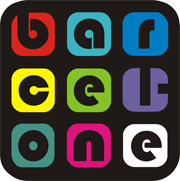Print Resources
What is an original print?
An original print is the image on paper or similar material made by one or more of the processes described below. Each process and resulting printing surface has a special, identifiable quality, but because more than one impression of each image is possible, original does not mean always unique.
The artist's intention to create an original print is the key to the originality of the finished work. For example, if the artist first conceives of a watercolor, then has the result copied by woodcut, the result is not original, but merely a reproduction. The total number of impressions printed of each image is an edition. The number may appear on the print with the individual print number as a fraction such as 5/25, meaning the edition was 25 impressions with this impression being number 5. If intended for use with a written text, original prints will not likely be numbered (or hand-signed) and may be produced in very large editions.
Original Graphic Arts Processes
Linocut
Made by cutting into the broad face of a aplank of linoleum, usually with a knife. In working the block, the artist cuts away areas not meant to print. These cut away areas appear in the finished parts of the design while the ink adheres to the raised parts.
Woodcut
Made by cutting into the broad face of a aplank of wood, usually with a knife. In working the block, the artist cuts away areas not meant to print. These cut away areas appear in the finished parts of the design while the ink adheres to the raised parts.
Wood Engraving
Made by engravnig a block made up of pieces of end-grain, extremely hard wood. The block, being naturally much harder, enables the artist to engrave (rather than cut) a much finer line than is possible on the softer plank surface used for woodcuts.
Collograph
Printing surface is built up on the plate or block by applying various materials which may also be incised.
Etching
A metal plate is coasted by a material which resists acid, called the ground. The artist then draws his design on the ground with a sharp needle which removes the ground where it touches it and, when the place is put in an acid bath, these exposed parts will be etched (or eaten away). This produces the sunken line which will receive the ink. In printing, the ink settles in the sunken areas and the plate is wiped clean. The plate in contact with damp paper is passed through a roller press and the paper is forced into the sunken area to recieve the ink. The artist etches on the plate those parts which will appear in the finished print as black or colored areas. White areas are left untouched. Depth of tone is controlled by depth of etch.
A la poupée is an intaglio printmaking technique for using different ink colors of ink using a ball-shaped wad of fabric to apply the ink to a copperplate. Paper is printed through just one run in the press. The term a la poupée means "with a doll", which refers to the wad of fabric, shaped like a ball
Engraving
The design is cut into the plate by driving furrows with a burin, then the plate is printed as above.
Drypoint
The sunken lines are produced directly by diamond-hard tools pulled across the plate. The depth of line is controlled by the artist's muscle and experience. The method of cutting produces a ridge along the incisions, called burr. This gives the drypoint line the characteristically soft, velvety appearance absent in the clean edged lines of an engraving or etching.
Aquatint
A copper plate is protected by a porous ground which is semi-acid-resistant. The white (non-printing) areas, however, are painted with a whole acid-resistant varnish. The plate is then repeatedly put in acid baths where it is edged to differing depths. The final effect is an image on a fine pebbled background (imparted by the porous ground). Aquatint is usually employed in combination with line etching. It.s used for medium tones
Aquaforte
A copper plate is protected by a porous ground which is semi-acid-resistant. The white (non-printing) areas, however, are painted with a whole acid-resistant varnish. The plate is then repeatedly put in acid baths where it is edged to differing depths. The final effect is an image on a fine pebbled background (imparted by the porous ground). Aquatint is usually employed in combination with line etching. It.s used for strong contrast.
Lithograph
The artist draws directly on a flat stone or specially prepared metal plate (usually with a greasy crayon). The stone is dampened with water, then inked. The ink clings to the greasy crayon marks but not to the dampened areas. When a piece of paper is pressed against the stone, the ink on the greasy parts is transferred to it.
Pochoir (Stencyl)
Stencilling produces an image or pattern by applying pigment to a surface over an intermediate object with designed gaps in it which create the pattern or image by only allowing the pigment to reach some parts of the surface

